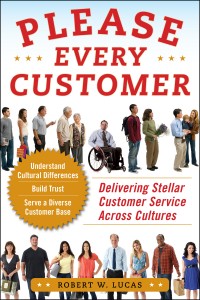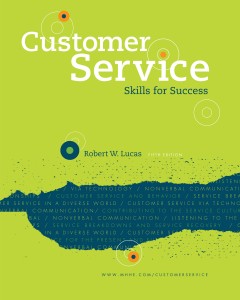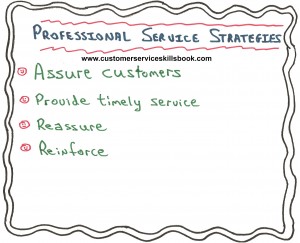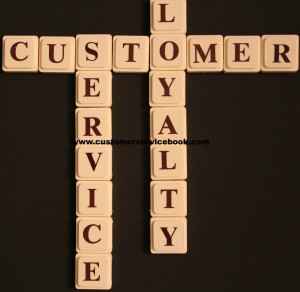Provide the Best Customer Service Possible
Providing the best customer service possible means that you do everything in your power to ensure that your customer’s needs, wants and expectations are met. Obviously, there are going to be times when challenges arise in service delivery, but that should not stop you from looking for practical and equitable solutions for both your customer and your organization.
A key part of any transaction is going to be that you always keep your word with customers. They have many choices in selecting a service or product provider. If they feel you cannot be depended upon to take action, they simply leave, often without complaint or comment.
When you tell customers you will do something, do it. Do not promise what you cannot deliver; many people take your word as your bond, especially those from cultures where a handshake still seals a deal (e.g. Middle Eastern countries, Hispanic and Asian cultures). Your goal should be to provide customers with competitively priced, reliable products or services that you deliver with little or no inconvenience or difficulty. Break the bond, and you risk destroying the relationship.
If feasible after delivering a product or providing service, contact your customer to make sure that he or she was satisfied and that your service met expectations. This follow-up can be an informal call, a more formal questionnaire, or a friendly e-mail or text message (assuming they authorized you to send such correspondence).
Always strive to underpromise and overdeliver. An example of this concept in action would be for you to suppose that a customer drops off film to be processed at your store on Tuesday. The store guarantees that the photos will be ready on Saturday. If possible, develop the film before Saturday, and call to tell the customer it is ready. When he or she comes to pick it up, give a coupon for a discount on the next roll of film. Such proactive efforts help secure customer loyalty and brand loyalty.

 For additional ideas and information on dealing with customers from diverse backgrounds get a copy of Please Every Customer: Delivering Stellar Customer Service Across Cultures. For ideas on how to better deliver customer service in a variety of situations, check out Customer Service Skills for Success.
For additional ideas and information on dealing with customers from diverse backgrounds get a copy of Please Every Customer: Delivering Stellar Customer Service Across Cultures. For ideas on how to better deliver customer service in a variety of situations, check out Customer Service Skills for Success.
About Robert C. Lucas
Bob Lucas has been a trainer, presenter, customer service expert, and adult educator for over four decades. He has written hundreds of articles on training, writing, self-publishing, and workplace learning skills and issues. He is also an award-winning author who has written thirty-seven books on topics such as, writing, relationships, customer service, brain-based learning, and creative training strategies, interpersonal communication, diversity, and supervisory skills. Additionally, he has contributed articles, chapters, and activities to eighteen compilation books. Bob retired from the U.S. Marine Corps in 1991 after twenty-two years of active and reserve service.
Make Money Writing Books: Proven Profit Making Strategies for Authors by Robert W. Lucas at Amazon.com.
The key to successfully making money as an author and/or self-publisher is to brand yourself and your company and to make yourself and your book(s) a household name. Part of this is face-to-face interaction with people at trade shows, library events, book readings, book store signings, blogging or guest blogging on a topic related to their book(s). Another strategy involves writing articles and other materials that show up online and are found when people search for a given topic related to a topic about which the author has written.
If you need help building an author platform, branding yourself and your book(s) or generating recognition for what you do, Make Money Writing Books will help. Bob’s popular book addresses a multitude of ideas and strategies that you can use to help sell more books and create residual and passive income streams. The tips outlined in the book are focused to help authors but apply to virtually any professional trying to increase personal and product recognition and visibility.
In my book Customer Service Skills for Success, I define customer service as “the ability of knowledgeable, capable, and enthusiastic employees to deliver products and services to their internal and external customers in a manner that satisfies identified and unidentified needs and ultimately results in positive word-of-mouth publicity and return business.”








